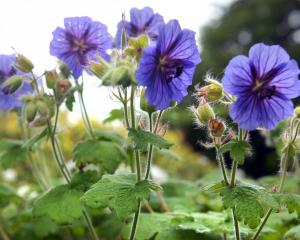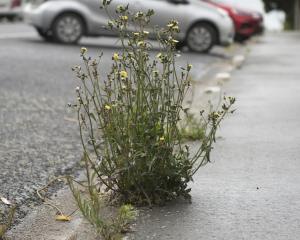There are weeds that have well-behaved relatives. Gillian Vine looks at alstroemerias.
Some plants suffer abuse because they have thugs in the family, so these well-mannered versions aren’t grown for fear they will turn out as bad as their relatives.
No-one wants the weedy forms of crocosmia (montbretia), japonica, elderberry, periwinkle, broom and alstroemeria but all have attractive cultivars that can enhance a garden.
Alstroemerias have numerous well-behaved cultivars that are ideal for Otago and Southland, as they are hardy to about minus 12degC, bloom for a long period, are excellent cut flowers and the rhizomes chug on for years with not much attention.
Often referred to as Peruvian lilies, or by the cringe-inducing commercial moniker Princess Lilies, alstroemerias’ 50 or so species all come from South America.
All but one are perennials, growing from clumps of rhizomes like tiny sausages.
Two species are considered pest plants in parts of New Zealand.
The first, common orange Alstroemeria aurea, spreads rapidly and is understandably shunned but the bad reputation of the other, A. psittacina syn. A. pulchella, will puzzle many southern gardeners, who find it non-invasive.
It has red and green flowers on stems up to 1m and their long-lasting blooms are ideal for floral work.
Ironically, these "weeds" have been used often to breed new varieties, although two other species, A. ligtu and A. pelegrina, also appear in the ancestry of some and fragrant hybrids have been developed using a perfumed Brazilian species, A. caryophyllaea.
The biggest groups of cultivars are the Inca and Inticancha series.
Inca types grow to about 60cm tall and come in red, orange, yellow and pink, many of them two-toned and flecked with dark markings.
Among those available are Desert (creamy yellow), Devotion (peachy pink flowers with yellow throats), Exotica (yellow with orange flashes), Glow, Mardi Gras (red flowers and variegated foliage) and Pulse (dark red and yellow).
Sweety is pink and white, a "micro Inca", growing to just 35cm.
Smaller still, at about 30cm, the Inticanchas include some of the most attractive pink varieties, such as Maya, which has soft pink and white blooms.
For height, Rock ’n Roll is a newer variety that will grow 1m or more.
Released about two years ago, it has bright orange-red flowers and variegated leaves.
White alstroemerias are a favourite of florists but plants are rarely available.
The Inticancha variety Antarctica is the most frequently offered but it is not pure white, being flushed with light pink and dark spotting.
Take a close look at alstroemeria leaves and you’ll see they have a twisted take on life: at the base, they resupinate, or turn, so what looks like the upper side of a leaf is actually the underside.
Alstroemerias will grow in full sun in cooler regions but in hot spots do better in part shade.
Like most tuberous plants, they should be kept moist in hot weather, as they cannot cope with very dry conditions and may die in a long drought.
On the other hand, they never seem to mind heavy rain, bouncing back when the sun shines again.
Disease is rare but slugs and snails can cause problems.
All alstroemerias are first-class flowers for cutting and will last two weeks in a vase, or longer if the water is changed every few days and a couple of drops of bleach mixed into it.
They can be grown from seed, but alstroemerias are usually sold as potted plants and are marketed from about October to February.
Before planting out, enrich the soil with compost, rotted manure or sheep pellets.
Alternatively, they may be grown in containers.
After the foliage dies down for winter, cut the stems close to the ground and mulch with compost to ensure good flowers the following summer.
Plants can be divided every two or three years, but if kept well nourished can be left much longer.
Their relatives may be considered weeds, but the named alstroemerias are an asset in every garden.


















